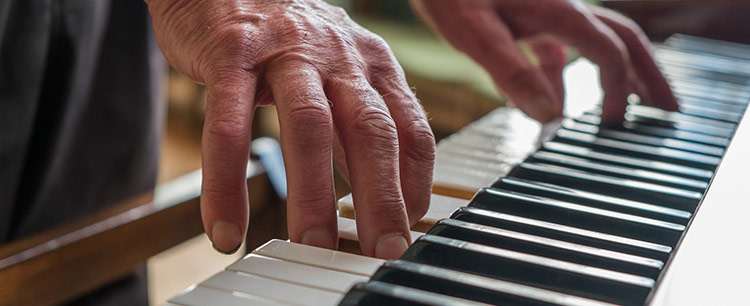When you wander the halls of the Vista Springs Center for Memory Care and Rediscovery, you’ll find not only the luxury accommodations our residents have come to expect but also a few unique features meant to speak directly to the care and treatment of the residents in our assisted living memory care facility.
While the halls, rooms, and decor of our facility are all specially design to accommodate residents with memory conditions, caring for these community members goes beyond even tiny details like color and layout. Bold colors, shapes, and textures are used to help anchor residents to their environments and strengthen memory muscle but objects and activities take memory care to the next level.
Sensory Stimulation
Using objects and activities to trigger emotions and memories is called Sensory Stimulation and it’s a popular technique when it comes to treating and caring for those with memory disorders. These objects can create a connection with the rest of the world when the patient has lost the ability to create that connection on their own.
In sensory stimulation, one or more of the fives senses will be aroused in a positive way when an object or activity is offered. The technique is used for a wide variety of conditions like autism or brain injuries but is popular in treating those with dementia or Alzheimer's. These objects can help create a safe and stimulating environment.
Sensory Stations
Within the Vista Springs community, this technique is used via stations set up throughout the memory care facility. These stations are set up for different activities such as clothes folding, diaper changing, shirt buttoning, and dishwashing. There are even cribs with babies to rock to sleep and cases filled with objects that would have been important during different time periods.
These simple activities take patient’s back to times they remember fondly; raising their children or actively participating in life. Sensory stations and various activities can be especially positive if a patient is upset, discouraged or scared. Activities they once engaged in mindlessly around the home will bring them comfort, decrease agitation, and maintain motor skills.
These types of stations and objects help focus on the person, the things they once enjoyed, and their daily lives; not the disease.
Comfort and Communication
While these objects and stations may not improve their memory or slow progression of the disease, there is no cure for Alzheimer’s or dementia, they do offer other perks for the patient and their caregivers. Engaging in familiar activities can improve overall mood, raise self-esteem and confidence and improve well-being.
And, for those who experience trouble communicating and everyday tasks, certain activities can offer alternate outlets of communication. If they have a hard time speaking, simply picking up a pen or pencil to draw may bring back old memories or give them a way to express themselves, even if it’s not through words.





